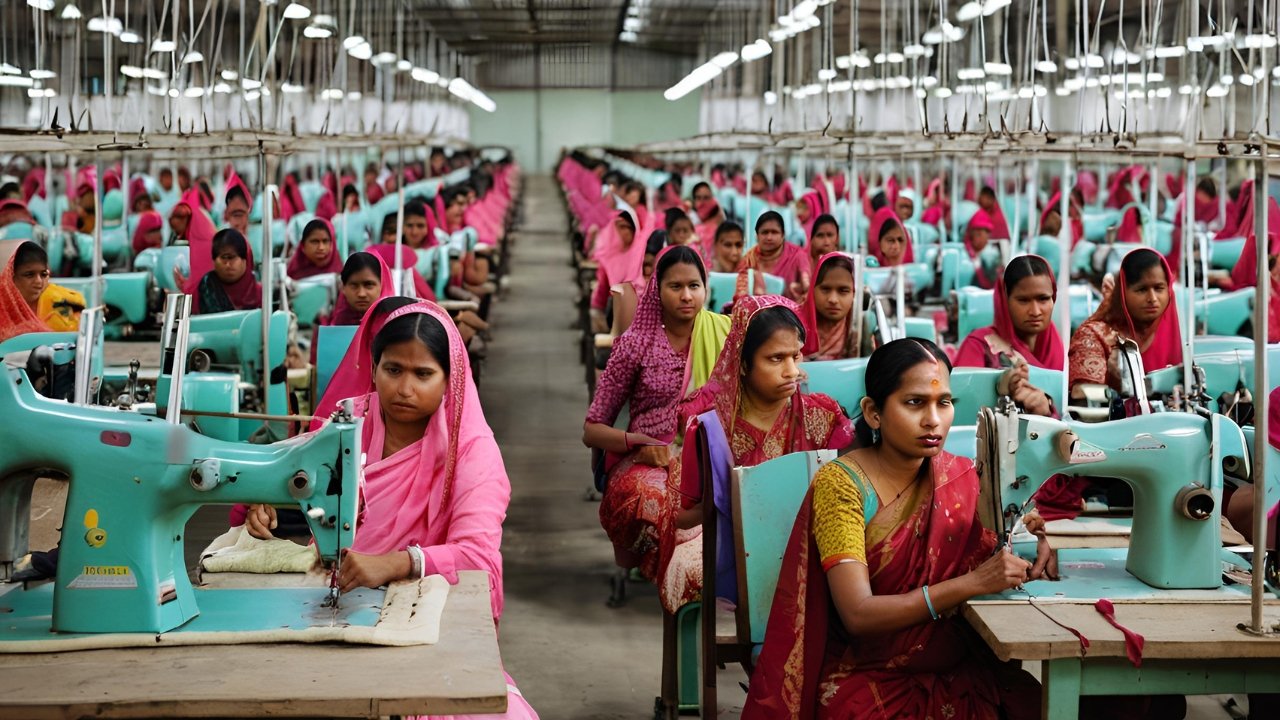
The Rise of Garment Factories in Bangladesh: A Comprehensive Overview
- Jul 27, 2024
- | 65
The garment industry in Bangladesh has witnessed a phenomenal rise in recent decades, transforming the nation's economic landscape. From humble beginnings, Bangladesh has become a global leader in apparel manufacturing, boasting a thriving network of garment factories and a workforce numbering in the millions. This article delves into the fascinating story of Bangladesh's garment industry, exploring its historical roots, key drivers of success, and the ongoing challenges it faces.
Humble Beginnings to Global Powerhouse
The seeds of Bangladesh's garment industry were sown in the 1970s following the country's independence. Favorable government policies, coupled with an abundance of cheap labor, attracted foreign investors seeking cost-effective production alternatives. The industry gained further momentum in the 1980s with the introduction of duty-free quotas under the Multi-Fibre Arrangement (MFA), a global trade agreement that gave developing countries like Bangladesh a competitive edge.
Key Drivers of Success
Several factors have propelled Bangladesh to the forefront of the global garment industry. Here are some of the most significant:
- Cost-Competitive Labor: Bangladesh boasts a large pool of skilled and semi-skilled labor available at competitive wages compared to other garment-producing nations. This cost advantage has been a major draw for international apparel brands.
- Favorable Government Policies: The Bangladeshi government has actively encouraged the growth of the garment industry through tax breaks, duty-free imports of raw materials, and the creation of dedicated export processing zones (EPZs). These policies have helped to reduce production costs and make Bangladesh a more attractive investment destination.
- Strategic Location: Bangladesh's geographical position offers a strategic advantage for global trade. Its proximity to major Asian markets and excellent connectivity through seaports make it easier and faster to export finished garments.
- Strong Infrastructure Development: Over the years, Bangladesh has invested heavily in infrastructure development, including improved transportation networks, power generation, and communication facilities. This enhanced infrastructure has helped to streamline production processes and improve overall efficiency within the garment industry.
Explore the best garments factory in bangladesh for your apparel production needs. We provide high-quality garment manufacturing solutions tailored to your specifications. With advanced machinery and a skilled workforce, our factory is equipped to handle large orders with precision and care. We prioritize ethical labor practices and environmental sustainability, ensuring that your products are not only top-notch but also responsibly produced. Reach out to us to discuss your requirements and get started on your next fashion collection with a trusted partner in Bangladesh.
A Look Inside a Bangladeshi Garment Factory
A typical garment factory in Bangladesh is a hive of activity, with workers meticulously cutting, stitching, and finishing garments for some of the world's most recognizable brands. Modern factories are equipped with sophisticated machinery and employ a diverse workforce, including skilled tailors, machine operators, and quality control personnel.
Production processes are often divided into separate sections, each dedicated to a specific stage of garment creation. These may include cutting rooms, sewing lines, finishing departments, and packaging sections. Strict quality control measures are implemented throughout the production process to ensure garments meet international standards.
The Human Face of Bangladesh's Garment Industry
The garment industry is a crucial employer in Bangladesh, providing millions of individuals, particularly women, with a source of income and economic independence. Working in a garment factory offers a pathway out of poverty and a chance to improve one's standard of living. However, concerns have been raised about working conditions and worker safety within the industry.
Addressing Challenges: Safety, Labor Rights, and Sustainability
As the garment industry in Bangladesh has flourished, concerns regarding worker safety, fair labor practices, and environmental sustainability have emerged. The catastrophic Rana Plaza garment factory collapse in 2013 brought these issues to the forefront of global attention.
Since then, significant efforts have been made to improve working conditions. Initiatives include stronger building codes, improved fire safety measures, and the establishment of independent monitoring bodies. Additionally, promoting fair wages, reasonable working hours, and adherence to labor rights remain ongoing priorities.
Sustainability is another vital aspect of the garment industry's future. There's a growing emphasis on using eco-friendly materials, reducing energy consumption during production, and minimizing waste generation. Bangladesh is actively exploring ways to promote sustainable practices within the garment sector.
The Future of Bangladesh's Garment Industry: Embracing Innovation and Adaptability
The garment industry in Bangladesh faces a dynamic future. Technological advancements, such as automation and artificial intelligence, are likely to impact production processes and workforce requirements. Embracing innovation will be crucial for Bangladesh to maintain its competitive edge and adapt to evolving consumer demands.
Additionally, the rise of ethical consumerism necessitates a continued focus on sustainability and ethical labor practices. By demonstrating a commitment to social responsibility and environmental consciousness, Bangladesh can solidify its position as a leader in the global garment industry.
Conclusion
The rise of garment factories in Bangladesh is a remarkable economic success story. From humble beginnings, the industry has evolved into a global powerhouse, providing employment for millions and generating significant export revenue for the nation.





